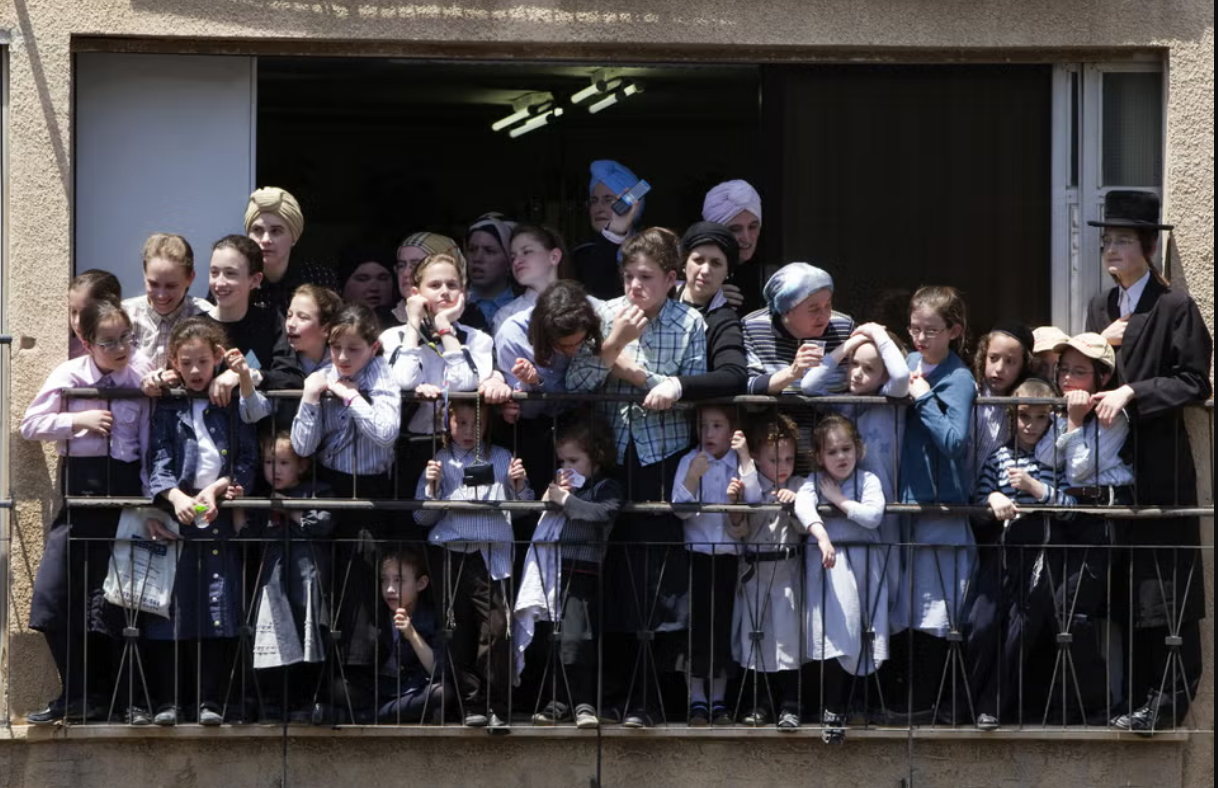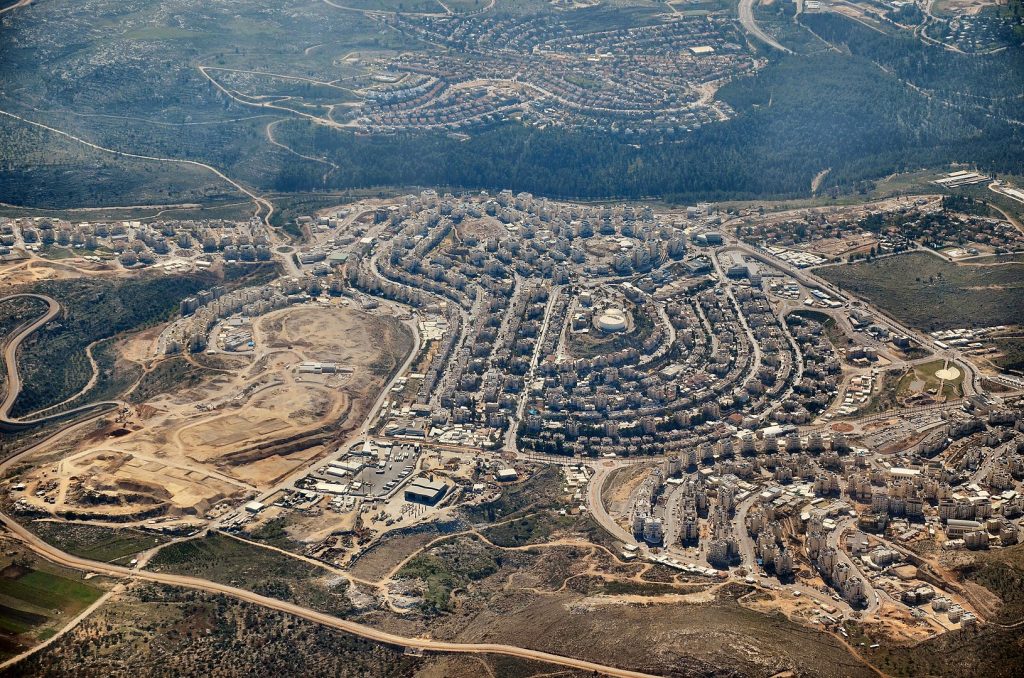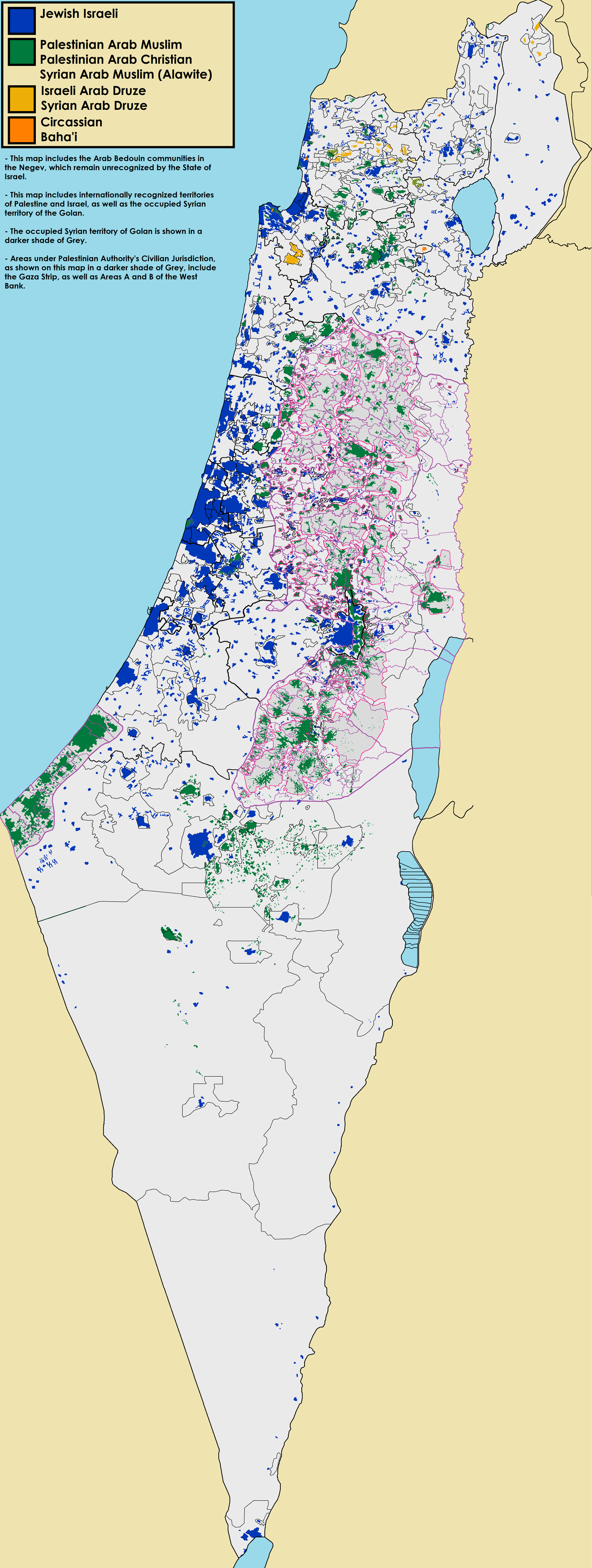Israel: a demographic ticking bomb in today’s one-state reality
by Claudia De Martino and Ruth Hanau Santini
Demography is a matter of national security in Israel and a key indicator for Israeli-Palestinian relations and their outlook: demographic trends in Israel are rapidly shifting and this will impact prospects for violence and conflict resolution.
As of late 2022, over seven million Israelis lived in Israel and the West Bank, and seven million Palestinians lived in the West Bank, Gaza Strip, Israel and East Jerusalem, a somehow integrated region referred to as “Greater Israel” by Jewish right-wing activists.

Demographic identity politics
A demographic bomb is already ticking. Israeli Jews experience an existential fear to be outgrown by the Palestinian population, and this is further instrumentalized by right-wing nationalist political entrepreneurs. Demography lies at the core of the territorial dispute between Jews and Arabs, as the two nations are waging a major war on numbers, aimed at weaponizing fertility rates to turn them into a predictive assumption of victory.
As the current Israeli right-wing government is laying the ground for the de facto annexation of the West Bank’s Area C, demography has been one of the tools employed to reassure the Jewish public opinion that Judea and Samaria could still be integrated into Israel, while keeping a Jewish demographic majority. However, demography remains a struggle for survival and an uphill battle for Israel. This is especially true if Israel were to progress with the Palestinian Area C annexation.
Demography-phobia is on display not just vis-à-vis the Arabs, but other minorities within 1948 Israel allegedly posing demographic threats against the Jewish majority. This is the case with the Israeli Victory Project – a settler lobby founded by the American commentator Daniel Pipes-, which inflates the Bedouin population growth projections in the next 15 years in Israel and denounces Bedouins’ creeping expansion in the Negev with the purpose to annex it to a future Palestinian state.
In terms of the ethnic breakdown of the Israeli population, in 2020, while 75% of the overall population was represented by Jews (6.87 million people); a fifth of the population was composed of two million Arabs (including Muslims, Druze and Christian Arabs); and a remaining 5%, or 465,000 people were “others”. In the last decade, Jews have increased by 18% and Arabs by 25%: this alone goes a long way in explaining why the Jewish state is aware of the importance of offsetting Arab fertility rates and actively supporting both Jewish natality and forthcoming aliyah (the waves of Jews emigrating into Israel from the rest of the world). In this war over birthrates, it may seem like good news for Israel that by 2040, the country’s overall population is projected to increase by another two million people, reaching 12 million. However, the Jewish population is growing mostly thanks to one community, the haredim, or the ultra-Orthodox.
Population trends and their consequences
From today onwards, demographic winners will be the haredim and the Arabs, with the haredim likely to represent a third of the overall population and the Arabs projected to be the majority of the overall population between the Mediterranean and the Jordan river by 2050.
The increase of the Arab population will represent a direct challenge to Israel with a rising Palestinian youth ever more segregated behind the Separation wall in the West Bank and a militarily closed off Gaza Strip, both disillusioned by their respective nationalist and Islamist leaderships and potentially more prone to violence.
Furthermore, the internal breakdown of demographic trends is rapidly changing within Israel. The country has for some time been experiencing a crisis of Jewish aliyah, with negligible numbers of Jews emigrating into Israel as compared to non-Jews: 2020 statistics pointed to only one third of the positive balance of immigrants as Jews, while the rest was indexed as “others” (particularly individuals stemming from Ukraine and the Russian Federation with only a loose relationship with Jewish ancestors). In other words, Israeli Jews grow, but thanks to the ultra-Orthodox. The diminution of the number of Jews immigrating from abroad goes hand in hand with the reduction of non-religious Jews within the country. As of 2020, haredi women are outnumbering any other Israeli group fertility rate, with 6.6 children on average, compared to 2.1 children per secular woman. This represents an annual growth of more 4% and 24% in the past five years for the haredi community. Despite favoring the Israeli side of the demographic war against the Arabs, the threefold increase of the Israeli ultra-Orthodox population will put a strain on Israeli economics and its society, as the haredim are net recipients of social welfare expenditures and do not contribute to bearing either the security or the fiscal burden.

Pragmatically, this will translate into at least three consequences: first, additional resources for social welfare, as demanded by the ultra-Orthodox population, whose male component contribute little to the workforce and whose large families require social support and housing. This drift towards increased state subsidies in social welfare would bring the sixth Netanyahu government further away from a neoliberal economic policy, a trend already shown by the 2023 state annual budget, where the government announced 250 million NIS (almost 62 million euros) to married ultra-Orthodox men engaged in religious study rather than work.
Second, an ever-worsening separation between secular and religious educational systems, which will translate into cultural battles and rising social tensions between haredim and liberal Jews, who might be shrinking demographically, but on whose shoulders rest the burden of the country’s defense through the compulsory service in the Israeli Defense Forces (IDF), as well as being responsible for fiscal revenues. According to the most recent survey available on the topic, in 2016, 45% of Jews defined themselves as living a secular lifestyle, 25% a traditional lifestyle, 16% a very religious lifestyle, and 14% a haredi lifestyle. This means that in 2016, the group of non-haredi Jews still kept a firm majority, constituting 86% of the Jewish population and 64.2% of the general population in Israel. Yet, the haredim are gaining ground as they are a well-organized and ideologically tight minority with a clear and well-defined set of values and interests for which their two parties – the United Torah Judaism (UTJ) and the mizrahi haredi party (Shomrei S’farad, meaning “Sephardic Guardians”, SHAS) – successfully lobby at the political level.
Third, the impact of haredi growth within the juvenile cohorts of the population and their systematic exemption from army service is already triggering a debate within the Jewish majority about the sustainability of the IDF as a “people in arms” based on a universal draft and the potential need to reform it. After a few failed attempts to introduce mandatory service also for the haredim since 1998, a last bid was made by the Bennet-Lapid government in 2021, only to hit a dead end, after which all reform attempts were silenced. With the net participation rate to the “people in army” steadily declining (today resulting in around 69% of Jewish men and 59% of Jewish women being drafted) and projected to slump further over time, it is likely that this trend will lead to the transformation of the IDF into a professional army, with potentially even less restraint in the use of force in the Palestinian occupied territories (OPTs) than is currently the case.
Funding the “silent transfer”
This will be particularly sensitive with the 500,000 additional settlers that the current Netanyahu government intends to relocate beyond the Green Line during its mandate. It will do so by improving infrastructure both in the settlements as well as “illegal” outposts, now equally entitled to state funds and services. Some sociologists have defined the settlement project the real “national project” (Yaron Hoffmann-Dishon, 2023) in Israel, which is directly funded and supported by the government through a complicated scheme of direct financial support and tax exemptions for settlers and their activities. Economic policy in Israel seems, indeed, twofold: while within Israel proper, the government implements a traditional neoliberal policy, slashing budgets and reducing its intervention, across the Green Line, the same government intervenes hugely in the economy, allocating land, developing infrastructure, building roads, establishing industrial zones in the Oslo-based Area C, in order to draw more and more settlers into the OPTs, enticed by their quality of life and reduced costs of living.
As shown by an increasing number of reports, which have picked up since the last Israeli elections of November 2022 but date well before the most right-wing and hardline government in Israeli history, Israeli settlers aim to eventually remove all Palestinians from the West Bank. One of the last episodes of this unchecked trend materialized on May 21st, when 200 Bedouin residents were illegally evicted from their homes and village in Ein Samia, northeast of Ramallah, overnight.
This displacement is no isolated event, but is part and parcel of a strategy of “silent transfer” modality, whereby settlers, with coercion and threat of violence, remove Palestinian populations without any intervention from the IDF. Settlers have already carried out a partial cleansing of areas of the Jordan Valley and the southern Mount Hebron. Some Palestinians label what is taking place on the ground as a “second Palestinian Nakba”, the forced removal of Palestinians from their places of origin in 1948. The situation is not dire only in the West Bank, where new Jewish-only roads are being built to connect Israeli settlements, excluding and bypassing Palestinian villages and communities, but in Israel itself, where the few examples of peaceful coexistence between Israeli and Israeli-Arabs, such as Haifa, Jerusalem and Lod, are testament to increasing intercommunal tensions, which occasionally erupt in violence, as was the case in May 2021. As the two-state scenario fades irrevocably away and the Israeli political spectrum is drifting rightwards, with the Nation-State Law (2018) well entrenched in power and a proposed bill advanced by the current government requiring ministers to adhere to Zionism as a “leading principal” in all government policies, the Arab-Israeli minority is likely to feel more and more cornered and discriminated against, further disengaging from Israeli politics.

Three future ways of (not) living together
The demographic trends outlined at the beginning suggest few possible scenarios. The most likely one sees an increasingly vocal haredi minority, growing demographically and politically, and with prospects for more empowerment in the future, drifting further rightwards. By embracing Zionist Revisionism or the national-religious political objectives, the haredi would endorse in full the settlement national project, including its methods, i.e. relying on the use of coercion and violence to steer away Palestinian communities from local villages in the West Bank. A weakened and delegitimized Palestinian Authority would merely manage Palestinian domestic affairs.
This trend would be particularly evident if a Republican candidate wins the White House in November 2024. Living conditions for Palestinians in the West Bank, East Jerusalem and Gaza will become increasingly untenable, but the advancement of normalization between Israel and the Arab states might lead to either a continuation of the Palestinian question being dismissed or to a concerted push for one key state, Jordan, to open its doors and absorb most of the Palestinian population from the West Bank, with some form of financial compensation from the Gulf states and the West.
A less likely scenario foresees liberal Zionists taking to the streets in major demonstrations rejecting the Supreme Court’s overhaul clause and safeguarding its independence and, thereby, civil rights and liberties in Israel, overturning in future elections the current majority and bringing to power a more moderate coalition able to reverse the trend from an open confrontation with the Palestinians back to a “shrinking the conflict policy” (Goodman, 2018), as was the case with the Bennet-Lapid government.
However, regardless of the varying degree of radicalism in successive Israeli governments, the growth of the haredi population is a major structural change likely to affect the population’s makeup and push settlement forward in search of cheap housing, affordable living conditions and available living space. The aim of this not-so-silent minority is living as a segregated and close-knit religious community, redeeming the Land before the Messiah returns and accomplishing the Zionist Revisionism’s objective of settling the whole land – Greater Israel, that is former mandatory Palestine and Transjordan seen as an undivided unit – in a messianic bid. This would be in line with Finance Minister Bezalel Smotrich’s prophetic words: “full annexation of the West Bank is needed to create a clear and irreversible reality on the ground and extinguish any illusions of a Palestinian state” (The New Arab, March 22, 2023).

